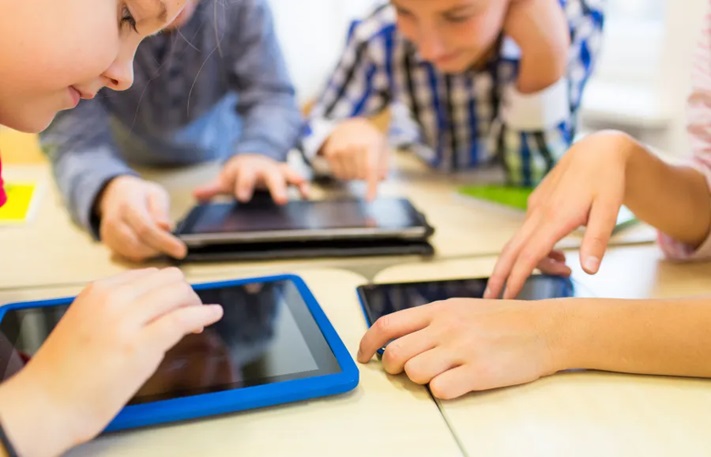Balancing Technology Use in Childhood Education

The digital age has transformed the way children learn and interact with the world, and technology has become an integral part of education. While these tools offer engaging and educational possibilities, they also introduce challenges that educators and parents must address to ensure children get the best out of their formative years. This post will explore strategies to balance technology use in childhood education, helping educators and parents make informed decisions about integrating tech in learning environments.
The Role of Technology in Early Education
Technology offers myriad benefits when integrated into childhood education. It can make learning more interactive, cater to different learning styles, and provide access to a broader range of information. Interactive apps can make subjects like math and science enjoyable, allowing children to learn through play and exploration. Furthermore, educational software can personalize learning by adapting to a child’s pace, offering additional challenges or support as needed.
However, while these technological advances enhance learning, they cannot replace the social and emotional connections fostered in traditional learning environments. Educators, especially those teaching preschool in places like Sandy, need to find the right balance between digital learning and face-to-face interaction. Preschools in Sandy and other regions recognize that technology should supplement rather than dominate classroom activities.
Potential Challenges of Technology in Childhood Education
With every advancement comes a set of challenges. Over-reliance on technology can lead to reduced physical activity, impaired social skills, and decreased attention spans in children. Additionally, not all educational content is created equal. It’s crucial to discern which apps and resources genuinely add value to a child’s learning experience.
Another challenge is ensuring equitable access to technology. Not all families can afford the latest devices, which could widen the educational gap between socio-economic groups.
Strategies for Effective Technology Integration
Prioritize Quality Content
When integrating technology into education, prioritize quality over quantity. Choose apps and software that provide educational value and are aligned with learning objectives. Use teacher-recommended tools or look for those endorsed by educational institutions.
Set Clear Boundaries
Establishing clear boundaries for tech use can prevent excessive screen time. For instance, balance digital lessons with hands-on activities and physical play. Create a routine that includes tech-free periods, allowing children to engage in unstructured play and social interaction.
Encourage Collaboration
Use technology to foster collaboration among students. Group projects utilizing digital tools can encourage teamwork and communication. Platforms that enable students to share their work and provide feedback can develop their critical thinking skills.
Educate Staff and Parents
Provide educators and parents with the tools to make informed decisions about technology use. Training sessions can equip teachers to effectively integrate digital tools into their lesson plans. Parent workshops can offer insights into managing children’s tech use at home.
Monitor and Adjust
Continuous monitoring of technology’s impact on learning will help educators and parents make necessary adjustments. Gather feedback from children, educators, and parents to assess both positive outcomes and areas that need re-evaluation.
Supporting Holistic Development
Balancing technology with traditional learning methods supports children’s holistic development. Encouraging activities that promote creativity, critical thinking, and social skills will ensure children develop into well-rounded individuals. Use technology to complement these experiences, not replace them. A storybook app can enhance language skills, but sitting down to read a book with a child will build a bond that no digital device can replicate.
Educators can encourage activities that complement tech use. Field trips, art exercises, and group play should continue to be mainstays of early education, providing opportunities for children to explore the world through different lenses.
Benefits of Outdoor Play
It’s essential to remember the value of nature in a child’s development. Outdoor play has been shown to improve physical health, boost creativity, and enhance problem-solving skills. Schools and parents can allocate time for outdoor activities, ensuring a well-rounded approach to development. Incorporating tech-free outdoor exploration can offset screen-based learning, promoting a balance between digital and real-world experiences.
Fostering a Love for Learning
Ultimately, technology can nurture a love for learning when used wisely. By introducing children to captivating digital tools, educators can spark curiosity and encourage a lifelong pursuit of knowledge. But perhaps most importantly, teaching children when and why to put the device down is a lesson that will serve them throughout their lives.
Creating a Balanced Approach
Navigating the world of digital learning is no small feat, but with careful planning and ongoing assessment, educators and parents can create a balanced approach to technology in childhood education. The goal is not to avoid technology but to use it effectively alongside traditional methods. By doing so, we can prepare children for a tech-savvy future without losing sight of the essential skills they gain from personal interactions and hands-on experiences.





